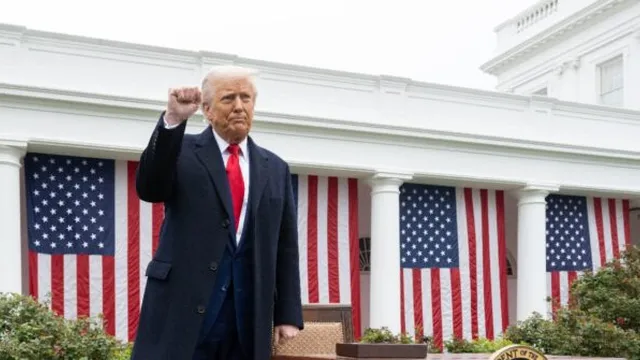
Scott Bessent warns tariffs could peak without retaliation
2025-04-05 11:14- Treasury Secretary Scott Bessent announced tariffs, which will impose 10% tariffs across most countries.
- Significantly higher tariffs will be levied on key trading partners like the EU, Japan, Taiwan, and China.
- World leaders are divided on the tariffs, with some condemning them while others hope for negotiations and reconciliation.
Express your sentiment!
Insights
In early April 2025, Treasury Secretary Scott Bessent announced new tariffs that are being referred to as 'Liberation Day' tariffs, set to impose 10% tariffs across most countries, with significantly higher rates for key trading partners, such as 20% for the European Union, 24% for Japan, 32% for Taiwan, and 54% for China. This move sparked a mixed array of responses from global leaders, with European Commission President Ursula von der Leyen labeling the tariffs as detrimental to the world economy. While leaders like German Chancellor Olaf Scholz and UK Prime Minister Keir Starmer expressed hope for negotiations to lift the tariffs, China responded defiantly, stating it would implement countermeasures. Surprisingly, Canada was exempt but condemned the measures, indicating a readiness to retaliate. The implications of these new tariffs have reignited discussions reminiscent of the historical context of tariffs in U.S. policy, looking back to 19th-century protectionism that aimed to support domestic industry but also led to adverse global economic reactions. The ongoing evolution of U.S. trade policy under President Donald Trump marks a significant departure from previous administrations, adopting a more confrontational approach to international trade that promises to reshape the global economic landscape.
Contexts
Tariffs are taxes imposed by a government on imported goods and services, affecting both domestic consumers and foreign producers. The impact of tariffs on the U.S. economy has been a topic of extensive debate among policymakers, economists, and industry leaders. On one hand, tariffs can protect domestic industries from foreign competition, leading to increased production and potential job creation within certain sectors. This protectionist approach can shield nascent industries from established global players, allowing them to grow and develop the capacity to compete internationally. Conversely, tariffs can lead to higher prices for consumers, as businesses often pass on the additional costs resulting from tariffs in the form of increased prices for goods and services. Furthermore, this can provoke retaliatory measures from trading partners, potentially leading to a trade war that can exacerbate economic tensions globally. Consequently, while tariffs may provide temporary relief for specific industries, they can also hinder overall economic growth and consumer spending in the long term. In recent years, the U.S. has seen notable changes in its tariff policy, particularly during trade disputes with major partners like China. These tariffs aimed to address perceived unfair trade practices, such as intellectual property theft and currency manipulation. The immediate effects of such measures included disruption of supply chains, as many manufacturers relied on imported materials and components to produce their final goods. The resulting increase in costs has led businesses to reconsider their sourcing strategies, some opting to relocate production to countries with lower tariffs or even back to the U.S. However, this transition is not without its challenges. It involves significant investments in new facilities, re-training of workers, and potential delays in ramping up production to meet demand. Such adjustments can strain resources and lead to volatility in financial markets as investors assess the long-term viability of businesses affected by tariff changes. The overall effect of tariffs on the U.S. economy remains complex and multifaceted. While they can generate revenue for the government, the potential downside includes job losses in industries reliant on exports, as well as reduced economic competitiveness on the global stage. Agricultural sectors, which rely heavily on exports, have particularly felt the pressure, as tariffs have restricted access to crucial markets, leading to financial strain for many farmers. In addition, comprehensive studies suggest that the broader economy may experience slower growth as uncertainty in trade relationships discourages investment. This has been evident as consumer confidence fluctuates in response to changing trade policies. In conclusion, the impact of tariffs on the U.S. economy is characterized by a delicate balance of benefits and drawbacks. Policymakers must weigh the advantages of protecting domestic industries against the risks of increased costs for consumers and strained international relations. Ongoing scrutiny of tariff policies is essential, alongside transparent communication with stakeholders, to ensure that the economy can adapt to changes and continue to thrive in a competitive global market. In the forthcoming years, the evolution of U.S. tariff policy will likely play a pivotal role in shaping the trajectory of the economy, influencing everything from consumer prices to international trade relations.